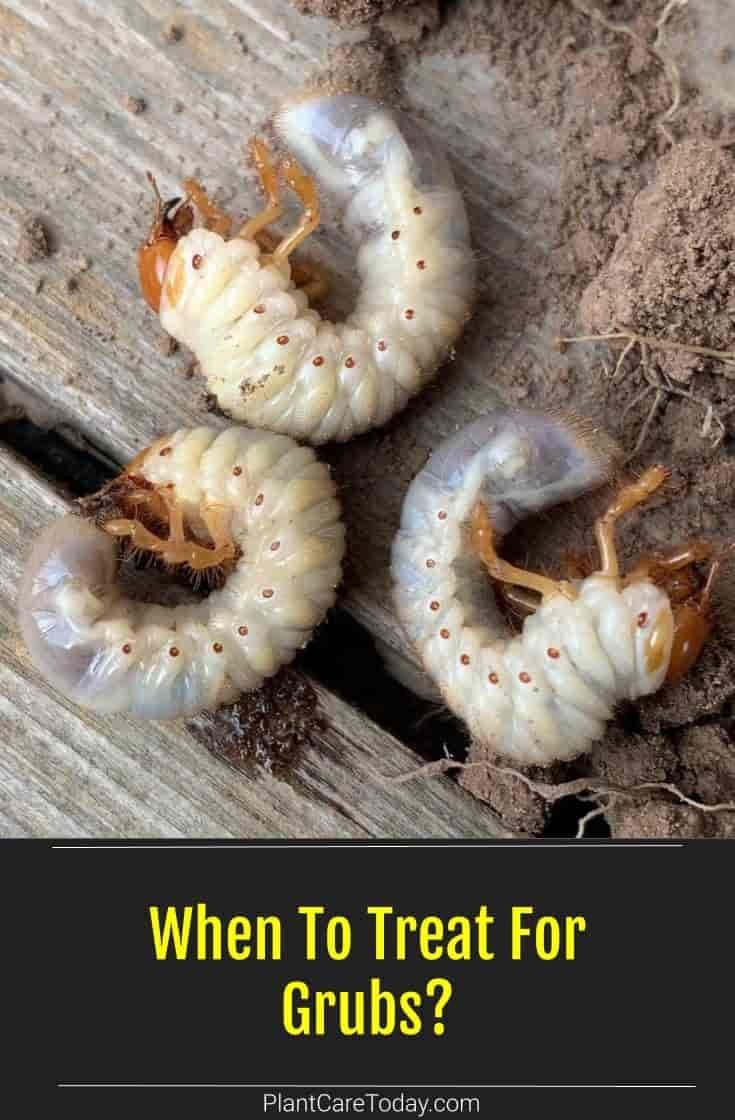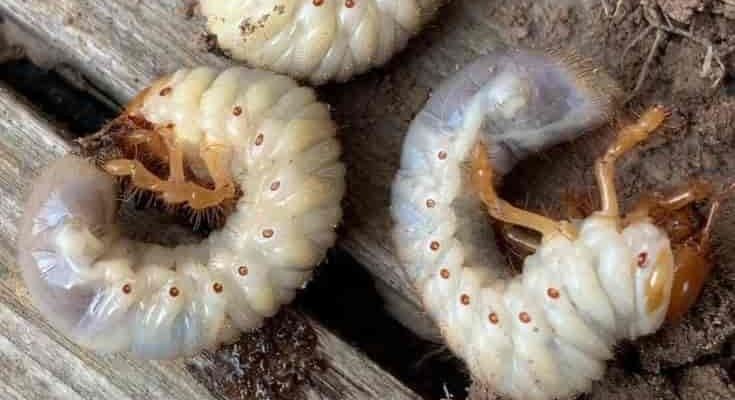
In this guide, we’ll explore the ins and outs of grub worms, why timing is crucial for effective treatment, and how to protect your lawn effectively. Whether it’s springtime prep or fall cleanup, understanding when to act can make all the difference. Let’s dive in!
What Are Grub Worms and Why Are They a Problem?
Grub worms are the larval stage of certain beetles, most commonly the Japanese beetle, June beetle, and chafers. These little white crawling creatures feast on the tender roots of your grass, making them a menace in any healthy lawn. If left unchecked, they can turn a vibrant yard into a dull, brown patch that looks more like a desert than a garden.
You might be wondering, “How do these grubs even get into my lawn?” Well, adult beetles lay their eggs in the soil, and once those eggs hatch, the grubs emerge to start their destructive feast. They tend to favor moist soil, which means they often appear in well-watered lawns. So, if you have been nurturing your grass, congratulations! You may have inadvertently created a buffet for these pests.
The trouble doesn’t stop with the grubs themselves. The damage they cause can also lead to other problems in your lawn. For instance, as the grass weakens, it becomes more susceptible to disease, weeds, and even drought. So, it’s not just about the grubs; it’s about maintaining a healthy environment for your lawn to thrive.
When Should You Start Watching for Grub Worms?
Timing is everything when it comes to treating grub worm infestations. The best time to start watching for them is typically late spring to early summer. This is when the adult beetles begin to lay their eggs in the soil. Knowing this timeframe is crucial because it sets the stage for effective treatment later on.
If you’re monitoring your lawn around June and July, keep an eye out for signs of trouble. These can include patches of grass that are wilting or turning brown, especially if they’re easy to pull up from the soil. This is often the first indication that grubs are devouring the roots below.
Once you notice those signs, it’s time to take action. If you wait too long, the grubs will grow larger and multiply, making them harder to control. So, stay vigilant! If you catch the problem early, you can make your treatment strategy much more manageable.
The Best Time of Year for Treatment
The ideal time to treat for grub worms depends on the life cycle of the beetles. Generally, the best times are late summer and early fall, specifically August through mid-September. During this period, the grubs are still small and vulnerable, making treatments more effective.
Let me explain why this timing works. In late summer, grubs start to move deeper into the soil as they prepare for winter. This is when they’re still active but not too deep to reach. Applying a treatment at this point gives you the best chance to kill the grubs before they mature and dig even deeper.
But what if you miss that window? Don’t worry! There’s still a chance for treatment in the spring. However, be aware that waiting until spring can lead to a more significant infestation since the eggs will have hatched by then, and the grubs will be larger and harder to control.
Types of Treatments for Grub Worms
When it comes to selecting a treatment, you’ve got a few options. Here’s a quick rundown:
- Granular Insecticides: These are easy to apply and are often spread over the lawn. They dissolve with water, targeting grubs in the soil.
- Liquid Treatments: These solutions are mixed with water and can be sprayed directly onto the affected areas. They usually work faster than granular options.
- Beneficial Nematodes: If you’re looking for an organic solution, beneficial nematodes are microscopic worms that attack and kill grubs. They’re a safe option for pets and wildlife.
Choose a treatment based on your preferences, lawn size, and infestation level. Applying treatments when the weather is cool and moist can enhance their effectiveness, so keep that in mind!
How to Apply Grub Treatments Effectively
Once you’ve chosen your treatment, applying it correctly is key. Here’s a step-by-step guide to ensure you get the best results:
1. **Read the Instructions:** Each product will have specific guidelines, so be sure to follow them closely.
2. **Choose the Right Weather:** Aim to apply treatments on a cool, overcast day to prevent evaporation and ensure the product penetrates the soil.
3. **Water After Application:** Most treatments require watering in. This helps to activate the product and reach the grubs hiding below the surface.
4. **Monitor Your Lawn:** After application, keep an eye on your lawn’s health. Some grubs may take longer to die if they’re not exposed to the treatment directly.
Taking these steps will help ensure that your lawn gets the protection it needs to thrive.
Preventing Future Grub Worm Infestations
Once you’ve tackled your current grub problem, you might be thinking, “How do I prevent this from happening again?” Great question! There are a few strategies to keep grubs at bay in the future.
1. **Maintain Healthy Soil:** Aerating your lawn can improve drainage and help grass roots grow deeper, making your lawn less attractive to grubs.
2. **Avoid Overwatering:** Grubs love moist environments. Watering your lawn early in the morning allows it to dry out during the day.
3. **Diverse Planting:** Mix in plants or flowers that attract predatory insects, which can help keep the grub population in check.
Remember, a healthy lawn is less prone to infestations. It’s all about creating a balanced ecosystem in your yard.
Final Thoughts
Dealing with grub worm infestations can feel like a losing battle, but understanding the best time of year to treat them is your first step toward victory. Remember, keeping an eye on your lawn’s health and acting quickly during the late summer and early fall can significantly improve your chances of success.
With the right treatment plan and preventive measures in place, you can protect your lawn and enjoy a beautiful outdoor space. Now, grab that lawn chair, kick back, and enjoy your grub-free yard!

